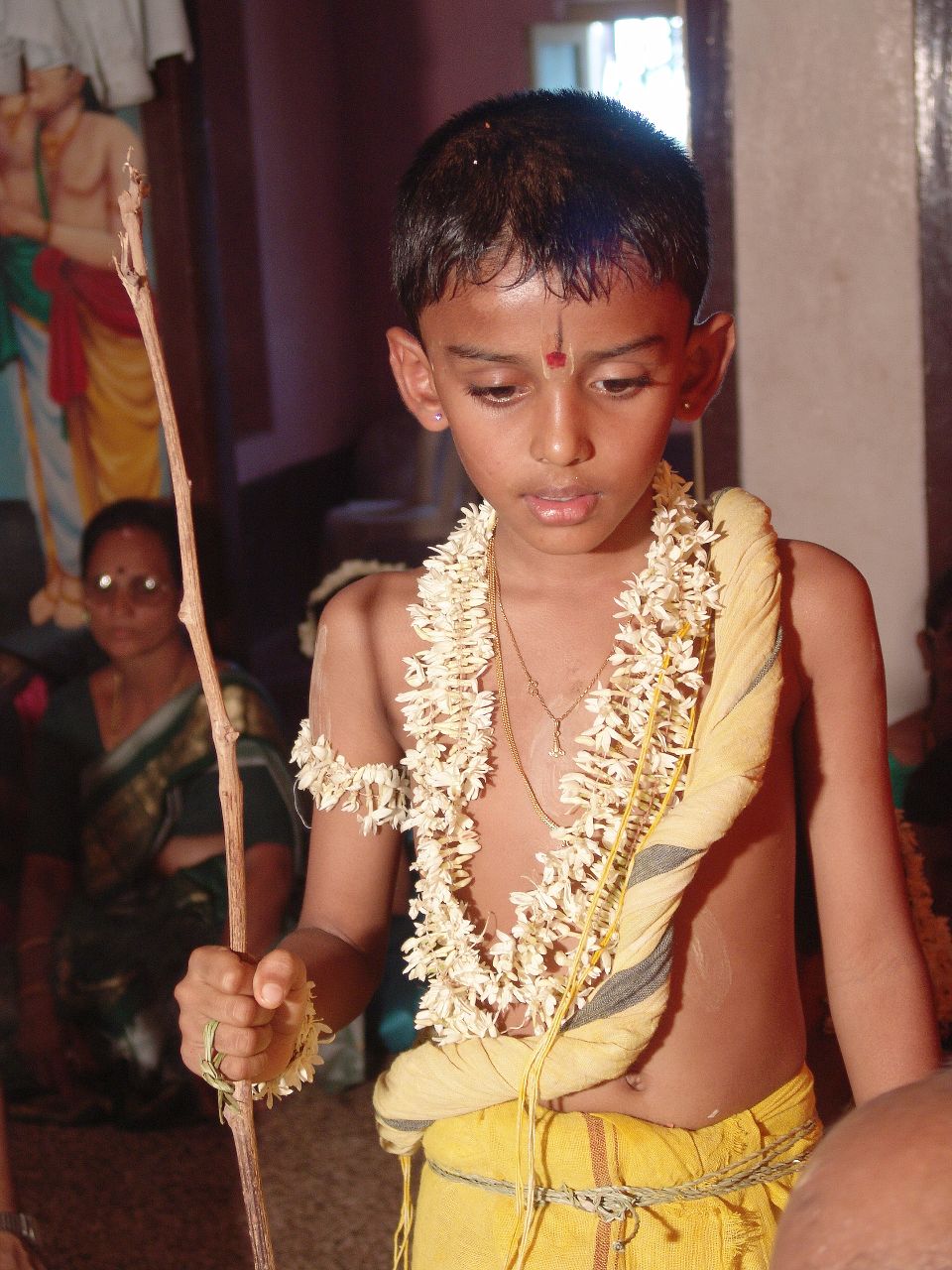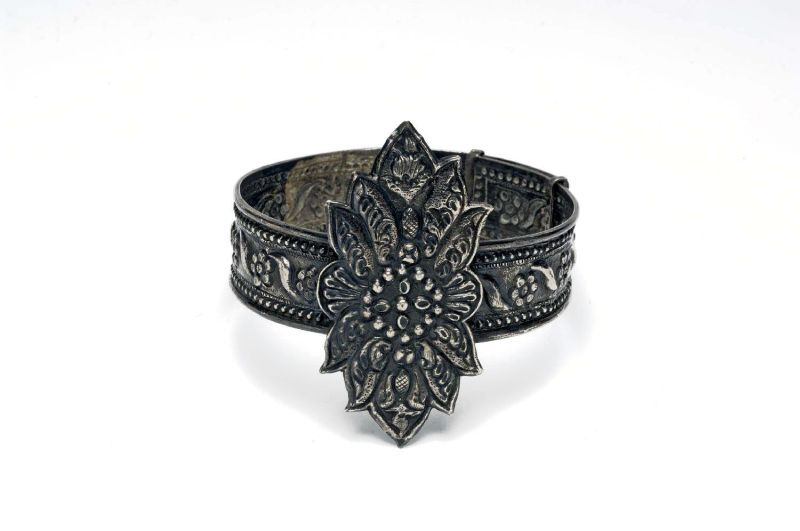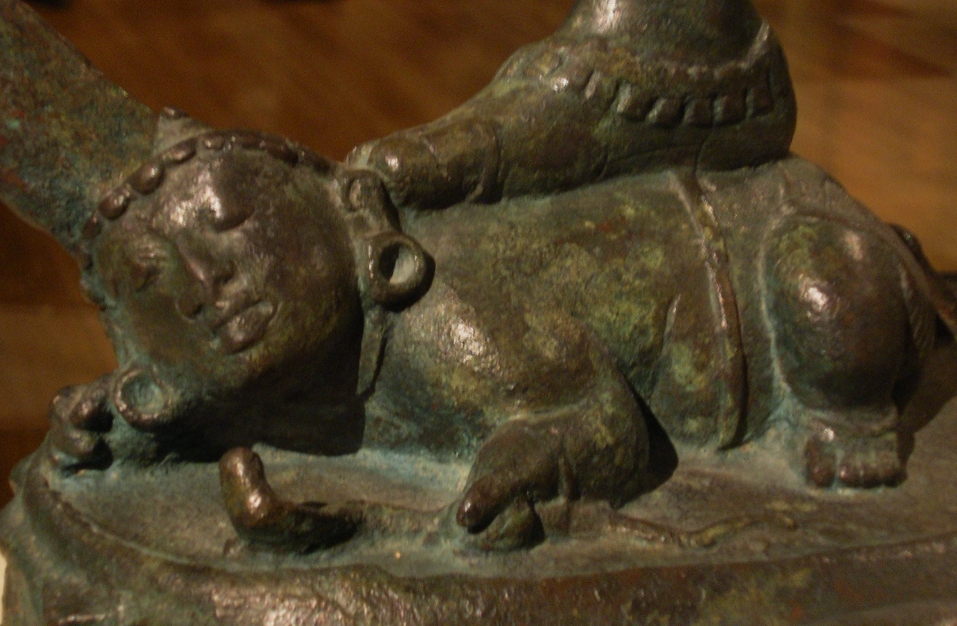|
Gudimallam Lingam
The Gudimallam Lingam is an ancient linga in the Parasurameswara Swamy Temple of Gudimallam, a small village near Tirupati city in the Yerpedu Tehsil, mandal of the Tirupati district of Andhra Pradesh, India. It is situated about 13 kilometers south-east of Tirupati city.Rao, 65 Though Gudimallam is a small village, it is well known because it has a very early linga that is unmistakably phallus, phallic in shape, with a full-length standing relief figure of Shiva carved on the front. This is in the garbhagriha of the Parasurameswara Temple, Hindu temple dedicated to Shiva. This is perhaps the second earliest linga associated with Shiva discovered so far, and it has been dated to the 2nd/1st century BC, or the 3rd century BC, or much later, to the 2nd century AD, 3-4th century AD, According to Harle, this is "the only sculpture of any importance" to survive from ancient South India before sculpture made under the Pallava dynasty from the 7th century AD onwards, and "its mysteri ... [...More Info...] [...Related Items...] OR: [Wikipedia] [Google] [Baidu] |
Gudimallam
Gudimallam is a village near Tirupati, located in Tirupati district of Andhra Pradesh state of India. It is situated about 15 kilometers southeast of Tirupati city. It is especially famous for the Gudimallam Lingam The Gudimallam Lingam is an ancient linga in the Parasurameswara Swamy Temple of Gudimallam, a small village near Tirupati city in the Yerpedu Tehsil, mandal of the Tirupati district of Andhra Pradesh, India. It is situated about 13 kilometers ... in the Parasurameswara Swamy Temple. Gudimallam is one of many small villages in a valley of Eastern Ghats of India that passes through Kalahasti and Kuppam. These Ghats along with small rivers originating in these rocky hills and mountains stretch along the eastern coast of India. The village Gudimallam is surrounded by agricultural fields irrigated by the waters of river Swarnamukhi located about 1 kilometer northwest of the village and one that originates in Chandragiri hills. The valley is punctuated by forested Ti ... [...More Info...] [...Related Items...] OR: [Wikipedia] [Google] [Baidu] |
Sanchi
Sanchi Stupa is a Buddhist art, Buddhist complex, famous for its Great Stupa, on a hilltop at Sanchi Town in Raisen District of the States and territories of India, State of Madhya Pradesh, India. It is located, about 23 kilometers from Raisen, Raisen town, district headquarter and north-east of Bhopal, capital of Madhya Pradesh. The Great Stupa at Sanchi is one of the oldest stone structures in India, and an important monument to the historical architecture of India. It was originally commissioned by the Maurya Empire, Mauryan emperor Ashoka the Great, Ashoka in the 3rd century BCE. Its nucleus was a simple hemispherical brick structure built over the relics of the Gautama Buddha, Buddha. It was crowned by the Chatra (umbrella), chatra, a parasol-like structure symbolising high rank, which was intended to honour and shelter the relics. The original construction work of this stupa was overseen by Ashoka, whose wife Devi was the daughter of a merchant of nearby Vidisha. Sanchi ... [...More Info...] [...Related Items...] OR: [Wikipedia] [Google] [Baidu] |
Stupa
In Buddhism, a stupa (, ) is a domed hemispherical structure containing several types of sacred relics, including images, statues, metals, and '' śarīra''—the remains of Buddhist monks or nuns. It is used as a place of pilgrimage and meditation. Walking around a stupa in a clockwise direction, known as '' pradakhshina'', has been an important ritual and devotional practice in Buddhism since the earliest times, and stupas always have a ''pradakhshina'' path around them. The original South Asian form is a large solid dome above a tholobate, or drum, with vertical sides, which usually sits on a square base. There is no access to the inside of the structure. In large stupas, there may be walkways for circumambulation on top of the base as well as on the ground below it. Large stupas have, or had, ''vedikā'' railings outside the path around the base, often highly decorated with sculpture, especially at the torana gateways, of which there are usually four. At the top of ... [...More Info...] [...Related Items...] OR: [Wikipedia] [Google] [Baidu] |
Gudimallam Linga, A 19th-century Replica From The Temple
Gudimallam is a village near Tirupati, located in Tirupati district of Andhra Pradesh state of India. It is situated about 15 kilometers southeast of Tirupati city. It is especially famous for the Gudimallam Lingam The Gudimallam Lingam is an ancient linga in the Parasurameswara Swamy Temple of Gudimallam, a small village near Tirupati city in the Yerpedu Tehsil, mandal of the Tirupati district of Andhra Pradesh, India. It is situated about 13 kilometers ... in the Parasurameswara Swamy Temple. Gudimallam is one of many small villages in a valley of Eastern Ghats of India that passes through Kalahasti and Kuppam. These Ghats along with small rivers originating in these rocky hills and mountains stretch along the eastern coast of India. The village Gudimallam is surrounded by agricultural fields irrigated by the waters of river Swarnamukhi located about 1 kilometer northwest of the village and one that originates in Chandragiri hills. The valley is punctuated by forested Ti ... [...More Info...] [...Related Items...] OR: [Wikipedia] [Google] [Baidu] |
Mongoloid
Mongoloid () is an obsolete racial grouping of various peoples indigenous to large parts of Asia, the Americas, and some regions in Europe and Oceania. The term is derived from a now-disproven theory of biological race. In the past, other terms such as " Mongolian race", "yellow", "Asiatic" and " Oriental" have been used as synonyms. The concept of dividing humankind into the Mongoloid, Caucasoid, and Negroid races was introduced in the 1780s by members of the Göttingen school of history. It was further developed by Western scholars in the context of racist ideologies during the age of colonialism. The organization has since been renamed the American Association of Biological Anthropologists. With the rise of modern genetics, the concept of distinct human races in a biological sense has become obsolete. In 2019, the American Association of Biological Anthropologists stated: "The belief in 'races' as natural aspects of human biology, and the structures of inequality (racism) t ... [...More Info...] [...Related Items...] OR: [Wikipedia] [Google] [Baidu] |
Yagnopavita
''Upanayana'' () is a Hindu educational sacrament, one of the traditional saṃskāras or rites of passage that marked the acceptance of a student by a preceptor, such as a ''guru'' or ''acharya'', and an individual's initiation into a school in Hinduism. Some traditions consider the ceremony as a spiritual rebirth for the child or future ''dvija'', twice born. It signifies the acquisition of the knowledge of and the start of a new and disciplined life as a brahmāchārya. The Upanayanam ceremony is arguably the most important rite for Brāhmaṇa, Kṣatriya, and Vaiśya males, ensuring his rights with responsibilities and signifying his advent into adulthood''.'' The tradition is widely discussed in ancient Samskṛta texts of Hinduism and varies regionally. The sacred thread or yajñopavīta (also referred to as ''Janeu'', ''Jandhyam'', ''Pūṇūl, Muñja and Janivara'' Yonya) has become one of the most important identifiers of the ''Upanayana'' ceremony in contemporary ti ... [...More Info...] [...Related Items...] OR: [Wikipedia] [Google] [Baidu] |
Dhoti
The dhoti is an ankle-length breechcloth, wrapped around the waist and the legs, in resemblance to the shape of trousers. The dhoti is a garment of ethnic wear for men in the Indian subcontinent. The dhoti is fashioned out of a rectangular piece of unstitched cloth, of usually around in length. The dhoti is the male counterpart of the sari, worn by females to religious and secular ceremonies ( functions). A is a yellow silk dhoti worn on auspicious occasions. Dhotis must not be confused with "readymade panchakachams" or "dhoti pants", which are a new ready to wear trend, popular among women and typical of children. Although the terms '' mundu'' or '' veshti'' are used interchangeably with "dhoti", they are different from the dhoti, which is "looped" or wrapped around the legs, in the form of trousers or pants. The dhoti is better known as panchakacham in South India, which may even be worn while doing dances such as moonwalks. While the sari is still draped by many wom ... [...More Info...] [...Related Items...] OR: [Wikipedia] [Google] [Baidu] |
Arm Ring
An arm ring, also known as an armlet or an armband, is a band of metal, usually a precious metal, worn as jewelry or an ornament around the biceps of the upper arm. The arm ring is similar to a bracelet or bangle, though it must be shaped and sized to fit snugly to the upper arm. Often, when the word ''"ring"'' occurs in Bronze-Age heroic literature it refers to an arm ring, rather than a finger ring. Within the context of the Scandinavian Bronze Age, archeological digs of graves suggest that arm rings were most commonly worn by men. Arm rings have also been found in Britain and Ireland, with artifacts dating from the Bronze Age till the Viking Age. Archeological discoveries of Bronze Age arm rings in Denmark suggest they were common Votive offerings during that period, found purposefully deposited in bodies of water or buried near large stones, hills, or barrows. It is believed that arm rings may have been bestowed as gifts by powerful lords to secure or maintain bonds ... [...More Info...] [...Related Items...] OR: [Wikipedia] [Google] [Baidu] |
Apasmara
Apasmara (, ) is a diminutive man who represents spiritual ignorance and ''ahamkara'' in Hindu mythology.Shiva as Lord of the Dance (Nataraja), Chola period, c. 10th/11th century The Art Institute of Chicago, United States He is also known as Muyalaka or Muyalakan. Etymology and definition The suffix ''smāra'' (from ''smaranam'') means memory. The compound ''apasmāra'' means loss of memory, which corresponds to conditions such as dementia or amnesia. It can also imply gibberish ( unintelligible spee ...[...More Info...] [...Related Items...] OR: [Wikipedia] [Google] [Baidu] |
Apse
In architecture, an apse (: apses; from Latin , 'arch, vault'; from Ancient Greek , , 'arch'; sometimes written apsis; : apsides) is a semicircular recess covered with a hemispherical Vault (architecture), vault or semi-dome, also known as an ''exedra''. In Byzantine architecture, Byzantine, Romanesque architecture, Romanesque, and Gothic architecture, Gothic Architecture of cathedrals and great churches, Christian church architecture, church (including cathedral and abbey) architecture, the term is applied to a semi-circular or polygonal termination of the main building at the liturgical east and west, liturgical east end (where the altar is), regardless of the shape of the roof, which may be flat, sloping, domed, or hemispherical. Smaller apses are found elsewhere, especially in shrines. Definition An apse is a semicircular recess, often covered with a hemispherical vault. Commonly, the apse of a church, cathedral or basilica is the semicircular or polygonal termination to the ... [...More Info...] [...Related Items...] OR: [Wikipedia] [Google] [Baidu] |






